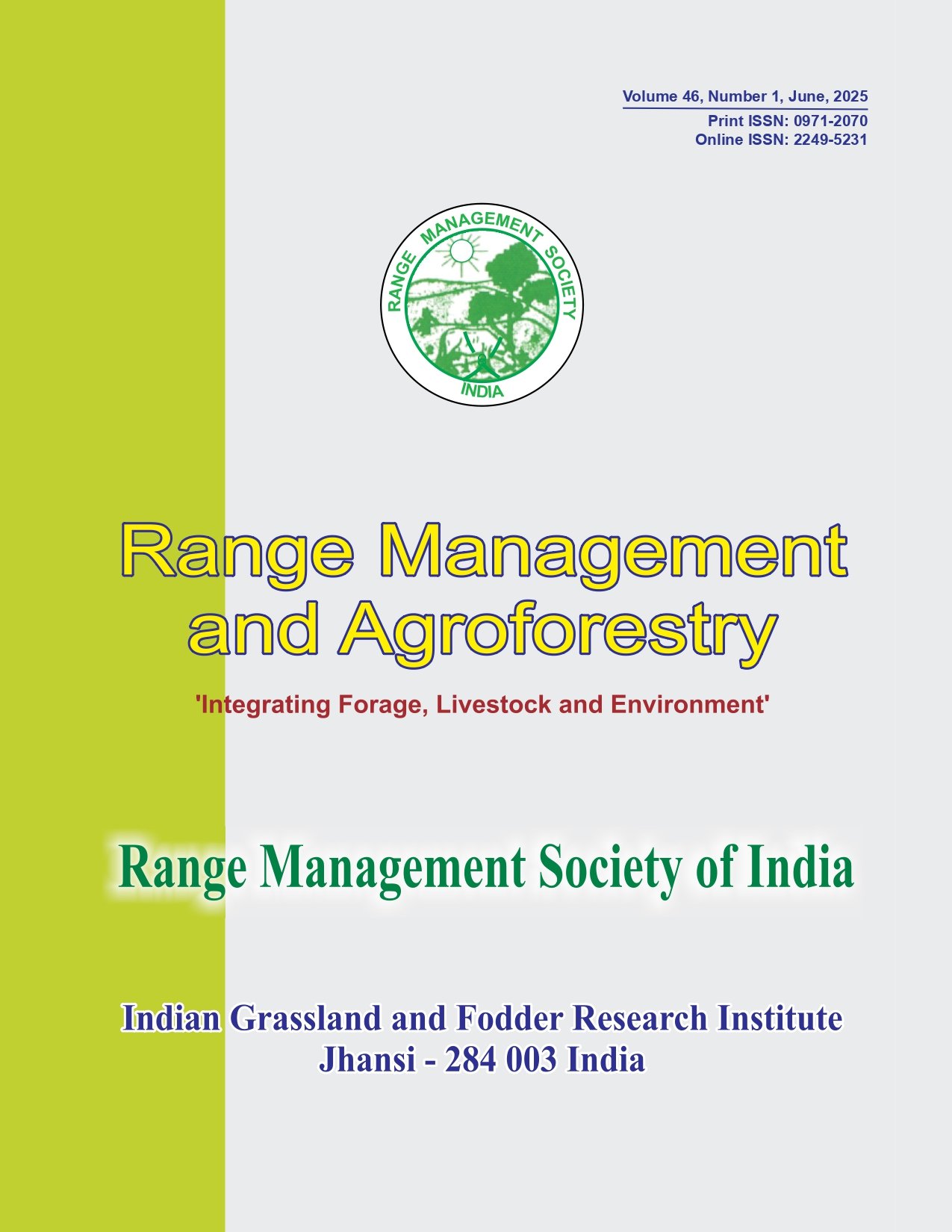Genetic variance and predicted response for three types of recurrent selection procedures in forage sorghum [Sorghum bicolor (L.) Moench]
Keywords:
Forage sorghum, Genetic analysis, HCN, WUE, Yield, Quality traitsAbstract
The present investigation was undertaken in the Forage and Millet Section, Department of Plant Breeding and Genetics, Punjab Agricultural University, Ludhiana to study the genetic variance and predicted response to selection for fodder yield and its components, hydrocyanic acid (HCN), water use efficiency (WUE) and quality traits over two environments viz., normal environment (Env-N) and water stress environment (Env-S) in forage sorghum [Sorghum bicolor (L.) Moench]. In this experiment, 100 families of each type viz. full sib, half sib and S1 were evaluated. The trend for mean fodder yield and yield contributing traits viz., plant height, number of leaves per plant, leaf area index and HCN content showed that the mean of full sib families exceeded the mean of half sib and S1 families. This indicated that heterosis and inbreeding depression were important for these traits in this population. More contribution of additive gene effects than dominance effects for genetic control of green fodder yield and other important characters was found in both the environments. For HCN content, the ratio of 2 A*/ 2 A was less than 0.5 in Env-N and greater than 0.5 in Env-S which suggested that dominance and /or epistasis were more influential in controlling HCN content under Env-N. Additive genetic variation estimates appeared to be sufficiently great to permit substantial progress by any of the three family systems of selection, but S1 family selection seems to be the most promising, particularly for improving green fodder yield, yield components, HCN content and WUE traits.




